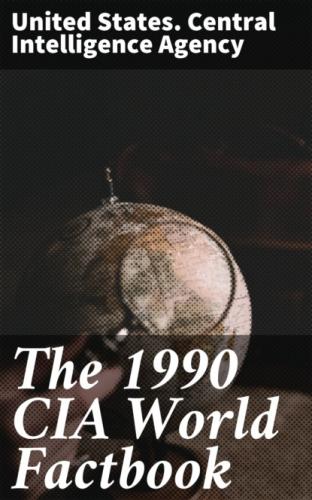Comparative area: about 0.8 times the size of Washington, DC
Coastline: 80 km
Maritime claims:
Continental shelf: 200 meters or to depth of exploitation;
Exclusive fishing zone: 200 nm;
Territorial sea: 3 nm
Climate: subtropical; humid; temperatures moderated by trade winds
Terrain: coral islands relatively flat; volcanic islands steep, hilly
Natural resources: negligible
Land use: 20% arable land; 7% permanent crops; 33% meadows and pastures; 7% forest and woodland; 33% other
Environment: subject to hurricanes and tropical storms from July to October
Note: strong ties to nearby US Virgin Islands and Puerto Rico
- People
Population: 12,258 (July 1990), growth rate 1.1% (1990)
Birth rate: 20 births/1,000 population (1990)
Death rate: 5 deaths/1,000 population (1990)
Net migration rate: - 3 migrants/1,000 population (1990)
Infant mortality rate: 14 deaths/1,000 live births (1990)
Life expectancy at birth: 71 years male, 77 years female (1990)
Total fertility rate: 2.2 children born/woman (1990)
Nationality: noun—British Virgin Islander(s); adjective—British
Virgin Islander
Ethnic divisions: over 90% black, remainder of white and Asian origin
Religion: majority Methodist; others include Anglican, Church of God,
Seventh-Day Adventist, Baptist, and Roman Catholic
Language: English (official)
Literacy: 98%
Labor force: 4,911 (1980)
Organized labor: NA
- Government
Long-form name: none
Type: dependent territory of the UK
Capital: Road Town
Administrative divisions: none (dependent territory of the UK)
Independence: none (dependent territory of the UK)
Constitution: 1 June 1977
Legal system: English law
National holiday: Territory Day, 1 July
Executive branch: British monarch, governor, chief minister,
Executive Council (cabinet)
Legislative branch: unicameral Legislative Council
Judicial branch: Eastern Caribbean Supreme Court
Leaders:
Chief of State—Queen ELIZABETH II (since 6 February 1952), represented by
Governor John Mark Ambrose HERDMAN (since NA 1986);
Head of Government—Chief Minister H. Lavity STOUTT (since NA 1986)
Political parties and leaders: United Party (UP), Conrad Maduro;
Virgin Islands Party (VIP), H. Lavity Stoutt; Independent
People's Movement (IPM), Cyril B. Romney
Suffrage: universal at age 18
Elections: Legislative Council—last held 30 September 1986 (next to be held by September 1991); results—percent of vote by party NA; seats—(9 total) UP 2, VIP 5, IPM 2
Communists: probably none
Member of: Commonwealth
Diplomatic representation: none (dependent territory of the UK)
Flag: blue with the flag of the UK in the upper hoist-side quadrant and the Virgin Islander coat of arms centered in the outer half of the flag; the coat of arms depicts a woman flanked on either side by a vertical column of six oil lamps above a scroll bearing the Latin word VIGILATE (Be Watchful)
- Economy Overview: The economy is highly dependent on the tourist industry, which generates about 21% of the national income. In 1985 the government offered offshore registration to companies wishing to incorporate in the islands, and, in consequence, incorporation fees generated about $2 million in 1987. Livestock raising is the most significant agricultural activity. The islands' crops, limited by poor soils, are unable to meet food requirements.
GDP: $106.7 million, per capita $8,900; real growth rate 2.5% (1987)
Inflation rate (consumer prices): 1.7% (January 1987)
Unemployment rate: NA%
Budget: revenues $26.2 million; expenditures $25.4 million, including capital expenditures of $NA (1988 est.)
Exports: $2.3 million (f.o.b., 1985); commodities—rum, fresh fish, gravel, sand, fruits, animals; partners—Virgin Islands (US), Puerto Rico, US
Imports: $72.0 million (c.i.f., 1985); commodities—building materials, automobiles, foodstuffs, machinery; partners—Virgin Islands (US), Puerto Rico, US
External debt: $4.5 million (1985)
Industrial production: growth rate - 4.0% (1985)
Electricity: 13,500 kW capacity; 59 million kWh produced, 4,870 kWh per capita (1989)
Industries: tourism, light industry, construction, rum, concrete block, offshore financial center
Agriculture: livestock (including poultry), fish, fruit, vegetables
Aid: NA
Currency: US currency is used
Exchange rates: US currency is used
Fiscal year: 1 April-31 March
- Communications
Highways: 106 km motorable roads (1983)
Ports: Road Town
Airports: 3 total, 3 usable; 2 with permanent-surface runways less than 1,220 m
Telecommunications: 3,000 telephones; worldwide external telephone service; submarine cable communication links to Bermuda; stations—1 AM, no FM, 1 TV
- Defense Forces
Note: defense is the responsibility of the UK
——————————————————————————
Country: Brunei
- Geography
Total area: 5,770 km2; land area: 5,270 km2
Comparative area: slightly larger than Delaware
Land boundary: 381 km with Malaysia
Coastline: 161 km
Maritime claims:
Exclusive fishing zone: 200 nm;
Territorial sea: 12 nm
Disputes: may wish to purchase the Malaysian salient that divides the country
Climate: tropical; hot, humid, rainy
Terrain: flat coastal plain rises to mountains in east; hilly lowland in west
Natural resources: crude oil, natural gas, timber
Land use: 1% arable land; 1% permanent crops; 1% meadows and pastures; 79% forest and woodland; 18% other; includes NEGL% irrigated
